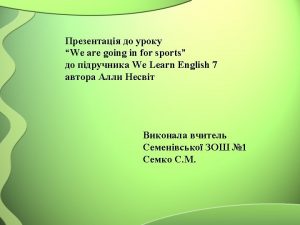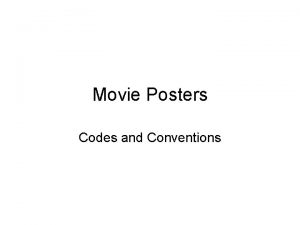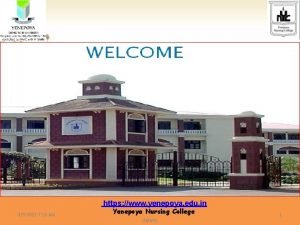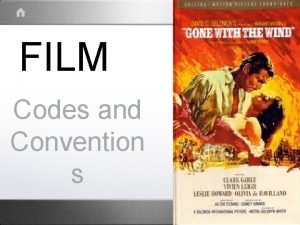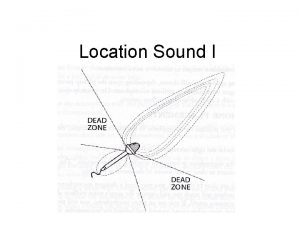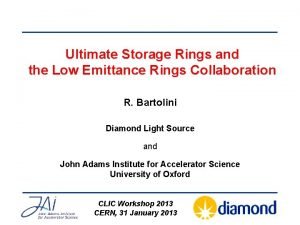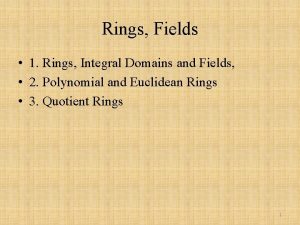Sound Design in Lord of the Rings and






- Slides: 6

Sound Design in Lord of the Rings and The Hobbit By Andrew Hollingshurst and Dot Tye

Lord of the Rings • The studio used to record Foley and edit/mix the sound was purpose-designed for the sound team to have access to the best and most appropriate equipment available. This was done due to the size and complexity of the job. • Almost every sound in the film was recorded in post, including 98% of the dialogue (through ADR). • Studio used was right by the airport in Wellington, meaning the sound was constantly interrupted by air traffic. • The Cave Troll creature had to sound fierce and frightening, and its roar was created through different recordings of real animals. Recordings of growls were played back through speakers in tunnels in Wellington. • To make the sound for the Balrog, they used the recording of a breezeblock being scraped across a wooden panel to create a “natural, organic, rocky feel”. • https: //www. youtube. com/watch? v=ep 3 SFve. S 678 – cave troll (3: 50 -4: 58) • https: //www. youtube. com/watch? v=tmt-l 7 ug. Oh 8 – cricket stadium (3: 26 -4: 15)

The Hobbit • Showcased the advances in sound technology. Sounds from Lord of the Rings were recorded at 16 -bit/44. 1 k. Hz, where as the sounds from The Hobbit were recorded at a higher definition of 24 -bit/48 k. Hz. • As a result, every sound had to be re-recorded for The Hobbit, to refresh it with new material. • Every sound effect was recorded on location, making them more realistic and fitting for the scene. • They gathered friends, family and staff to create the crowd noises of panicked villagers. • https: //www. youtube. com/watch? v=x. MKj. PWQu. BFs – crowd (1: 16 -1: 51) • https: //www. youtube. com/watch? v=IAvz. Ebn 7 DDU – cave (2: 21 -2: 40)

Dolby Atmos • The Hobbit saw the arrival of the Dolby Atmos technology. • “…bringing the audience into the audio experience, that is Atmos, it allows us to enhance not only what the audience feels, but adds clarity” • It allows 128 independent sounds to be played from up to 64 locations, creating an immersive experience for the user. It is a leap forward from the 7. 1 surround systems beforehand. • https: //www. youtube. com/watch? v=IAvz. Ebn 7 DDU – Dolby (6: 558: 13)

Sound Designers • Dave Whitehead – wrote the language for the aliens in District 9 (2009) (alien vocals/sound designer), King Kong (2005) (Sound designer) and Pirates of the Caribbean: the Curse of the Black Pearl (2003) (sound effects recordist) • David Farmer – Sound design of films such as Avengers: Infinity War (2018), Thor Rangarok (2017), King Kong (2005) (alongside Whitehead). Has also worked on multiple video games, such as World of Warcraft: Cataclysm (2010). Was the creature vocal sound designer on The Incredible Hulk (2008)

How is this sound design effective and important? • Shows the dedication and hard work of the team to produce the highest quality sound design possible. • The outcome is completely immersive for the audience, which was their goal. • The effort to go out and make the sounds as realistic as possible puts more focus on an area that often goes unnoticed in film. • The differences between Lord of the Rings and The Hobbit show the progression in modern sound technology.



